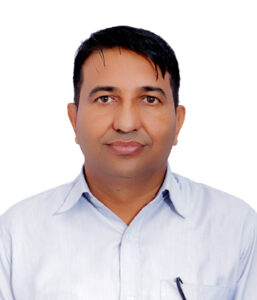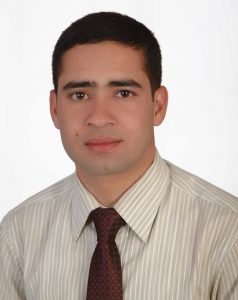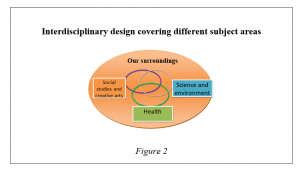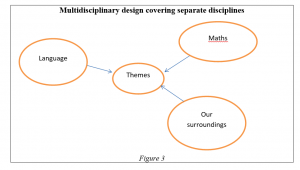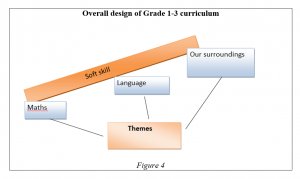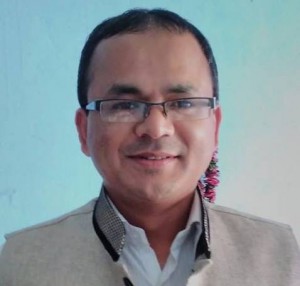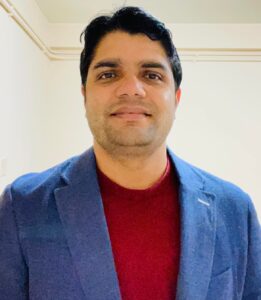
Prem Prasad Poudel is a recent PhD graduate from The Education University of Hong Kong, Hong Kong (2021/22). He is an Assistant Professor at Mahendra Ratna Campus, Tribhuvan University, Kathmandu, Nepal. He has experiences teaching at higher education in Nepal and Hong Kong, and has been continuously engaged in research with national and international teams on the issues of privatization in education, educational outsourcing, whole-child development, postgraduate students’ aspirations and well-being, medium of instruction policies, educational equality, and equity. He studied language policies, planning and the associated sociological issues during his PhD, and explored issues like language and social justice especially in the bi/multilingual social spaces nationally and internationally. Recently, he has been diving deeply into these issues to understand language and education issues from a socio-historical perspective.
Choutari editor, Nanibabu Ghimire has initiated a conversation with Dr. Poudel on language in education policies and practices, mother tongue education, English medium instruction (EMI) and its multiple facets. Enjoy this exclusive interview at Choutari.
Q: What do you think about the practices of medium of instruction (MOI) in school education in Nepal?
Starting from 1990s, we have seen significant developments in making language policies including MOI more people centric. The current constitution of Nepal allows the schools to use Nepali, English or the other languages of the nation as a medium of instruction in schools, up to the secondary level. Despite this policy, schools are aggressively (and sometimes blindly) shifting towards English medium instruction (EMI). The consequences of such shifts are adverse, especially for a multilingual and multicultural context. For instance, in Nepal’s case, even Nepali, the national language, has been displaced in many contexts from schools and has only been taught as a subject, and its (and several other languages) role as the MOI has been displaced by English. Hence, the practice of MOI in Nepal’s schools is highly English dominated. We have recently explored this issue from decolonial perspective and have published a paper, especially the colonial power of English in school and the efforts for the decolonization of it in school education in Nepal, which can be accessed here.
Q: Why are people attracted to English medium instruction (EMI) in school education in Nepal?
Good question. There is a craze toward adopting EMI in all levels of school education. This case is more serious in the early childhood education (the so called Montessori education). Several factors have driven this trend. First, EMI is our history, as it emerged along with the beginning of formal education in Nepal, which set a false belief that education in English is of better quality and of higher status. Second, the globalization and neoliberal marketization projected English as the language of opportunities, a key to cross-border employment opportunities and social mobility. The third factor is our social psychology. For example, in our case, perhaps similar to many non-native English-speaking countries, an ideology deeply rooted in Nepali society is that English is the language of prestige and higher social values such as being standard, educated or elite— an indicator of being an elite. This belief of projecting English as a high-valued language implies that languages other than English deserve less value and prestige. The main problem here lies in the superior-inferior labelling assigned to English and other non-English languages. This has affected our language choice in media, trade, education, family language practices and our lives in the public. For instance, if you walk around our marketplaces, most signboards are written in English at the top (perhaps in larger fonts) followed by Nepali (or none). This practice is intended to expand business and establish English as one of the commodities salable in the market. You know this is a form of hierarchization of languages in public places. It’s seemingly simple but has long-term implications for language policies.
Q: Despite having policy to provide basic education in learners’ mother tongue, people want to educate their children in English medium schools. How do you perceive this trend?
You’re right. There are legislative and educational policy provisions about using learners’ mother tongues or the most familiar language as a medium in schooling, which is good from a linguistic human rights perspective. However, people these days are attracted by the utilitarian values attached to languages. Some simple questions people have in their minds are, “What do I get by learning in my mother tongue? What are the benefits?” In my perspective, people today look for ‘socio-economic’ benefits out of learning in and learning of a language. This is a force coming in as a product of the neoliberal market that gives people a choice but simultaneously projects the economic gains or the material and social capital attached with learning a particular language as essential elements of an individual’s life. So, the growing trend of parents uncritically preferring to educate their children in EMI is unfortunate for contexts like ours, where children are taught the contents in the English language since the beginning of formal schooling.
Q: Meanwhile, language-minoritized parents are found to be motivated in teaching their children in EMI instead of their home language. What can be the reasons behind this?
I think the concerns should not be about majority or minority language speaking communities, rather, it should be about what structural conditions led these communities with less power to choose the dominant languages such as English for educating their children. In non-native English-speaking contexts beyond our national context as well, no matter the demographic strength of communities, they are driven by ‘English fever’. For example, in South Korea, as Choi (2022) pointed out, despite the deliberate efforts made by the governments, English continues to be the language of social prestige and quality education. Look at the Nepali native-speaking communities here in our context. People are more concerned about access to English, thinking access to English will widen their global space. The communities are abandoning or at least minimizing the use of their native languages in education. For them, it is not about whether their children learn English but the widening inequalities caused by English. Several researches in Nepal (e.g., Poudel & Choi, 2021; Phyak, 2016, 2021; Sah, 2022) have demonstrated it. While I was in the field for my doctoral study, I remember two EMI schools; one private and the other public. However, both students and parents of the public school were projecting the private school in the vicinity as of better quality. They thought that the English in these two EMI schools was unequal. They were anxious about the future life chances of their children due to the unequal exposure to English. Isn’t it interesting? So, what I mean is, people are not worried about the coercive impact of English on their ethnic/indigenous languages, rather, they are concerned about the consequences that their children might experience due to not getting exposed to zero or unequal English education. The main driving factor is their false assumption that ‘if you have English, you have everything, and if you don’t, you miss everything’, which is so unfortunate.
Q: So, does EMI improve the students’ English as parents/stakeholders think?
Schools today are intentionally or forcefully shifting their medium to English. To my knowledge, extensive research evidence to claim that the practice of EMI improves students’ English is still missing, especially from the Nepali context. However, there are mixed arguments regarding the benefits and side effects of EMI. For instance, since the 1990s, critical linguists have been questioning the inequalities in schooling posed by aggressive and unplanned adoption of EMI for children whose home language is other than English. At the same time, there are claims at the grassroots level that if EMI is appropriately implemented, extensive exposure to English may improve students’ proficiency in English. However, I would say no evidence claims that teaching English as a subject does not improve their proficiency. I think, we need more research evidence to answer your question in terms of Yes or No.
Q: How can we convince the people to teach their children in the home language (mother tongue) as mentioned in our policy documents? Or is that impractical? If yes, how?
Again, I would say that we should not think about convincing. This ‘ideology of convincing’ sounds more like a hegemonic idea, and it creates an impression of a ‘ruler-ruled’ relationship, which is impossible in an ideal democratic society. The most important thing we need to consider now is ‘what structural conditions enable the use of children’s home languages in education vis a vis English?’ Regarding policy, yes, there are relatively favourable policy conditions at the macro level, but the support systems for such policies to be implemented well are not sufficient and also are not owned by the parents, who are the key influencers in school policies. Unless we counter or challenge the prevailing ‘deficit ideologies’ concerning minority languages, we cannot realise the agenda of mother tongue education. To do so, I think one of the essential steps to be taken is enhancing the social and functional values of minority languages.
Q: Why is there a gap between MOI policy and practice in basic education in Nepal? How can this gap be eliminated?
As I also mentioned previously, the main problem is about ownership of the well-intended policies at the grassroots level. For instance, several reports of the Language Commission of Nepal have also highlighted that parental ownership concerning the use of local/indigenous languages is negligible, which invisibly forced the schools to adopt the dominant language the community gives priority to. This shows that there are instances of resistance (albeit invisible) from the bottom up, and the top-down policies have not been able to find their way. Consequently, we have missed a good policy action and positive response to the policy at the implementational level. Unless we address the factors that create this condition for policy-practice gaps, and establish causal relationships between policies and policy outcomes, such as the impact of the implementation of MOI, we will have hard times in bridging the policy-practice gaps.
Q: How do you perceive the current research practices of MOI in the global and local context? What would you suggest to researchers in language policy and planning moving forward?
Starting from the 1990s, language policy research gravely took a critical gaze, raising issues of inequalities and inequities caused by language policies of several nations. I remember one of the monumental works in language policy is J. W. Tollefson’s book, published in 1991. He raised critical concerns about challenging the structures that promote monoglossic ideologies in policy making. Since then, there are significant advancements in researching language policies such as MOI, for instances the works of Tollefson and Tsui (2004), Liddicoat and Baldauf (2008), to name some. The research trend in MOI has moved towards exploring sociological issues such as MOI and social classes, MOI and social hierarchies, inequalities, elitism, and commodification of language(s) (Block, 2021; Heller, 2010; Menken & Garcia, 2010). I am very happy to see that such issues in Nepal’s case are also increasingly explored by several applied linguists and critical scholars like Dr. Lava Deo Awasthi, Dr. R. A. Giri, Dr. Prem Phyak, Dr. Pramod Kumar Sah and several other emerging scholars including you. I cannot name every work of everyone of the language policy scholars here in this short interview, but I know that emerging scholars are exploring several socially embedded issues in language policy such as MOI. The critical scholars have also questioned the threats generated by English on the very existence of other languages in their respective community contexts at the global level. Another important development in our case is that universities (e.g., Far Western University) have developed very specific courses on language policy and policy research in M. Phil and PhD programs. I am sure that such developments will expand our context-specific research on language policy and associated concerns.
One of the critical concerns we need to explore is the intersectionality of language policies (e.g., MOI) with broader historical, structural, cultural and economic conditions of the society. We have initiated a discourse in this direction through a publication (see Poudel & Choi, 2022- entitled “Discourses shaping the language-in-education policy and foreign language education in Nepal: An intersectional perspective). I would suggest future language policy researchers direct their research on identifying the relationship of the forces such as nationalism, neoliberal marketization and ethnicity and their impact on language policy decisions and implementation. It would also be interesting to see (even question) the roles of national and international organizations (e.g., The World Bank, OECD, EU etc.) promoting the neoliberal agenda that aims to homogenize the world while also advocating for diversity and equity. Future research could also explore the ways of enhancing community participation and engagement in establishing an equitable society by promoting the local languages and cultures so that the local epistemologies can be preserved and used in uplifting the lives of people who are living under conditions of the feeling of inferiority, minoritization and hatred. To be frank, we need to engage in critical dialogues at all levels of governance to realize the agenda of multilingualism.
As you have come to this point, you might have thoughts, feelings, and views about Dr. Poudel’s opinions and the issues raised here, so we invite you to drop your comments and questions below to advance the discourse.
[To cite it: Paudel, P.P. (2022, October 15). Structural conditions are responsible for parental agency to influence the uncritical adoption of EMI: Dr. Poudel, PhD [blog post]. Retrieved from https://eltchoutari.com/2022/10/structural-conditions-are-responsible-for-parental-agency-to-influence-the-uncritical-adoption-of-emi-dr-poudel/]

